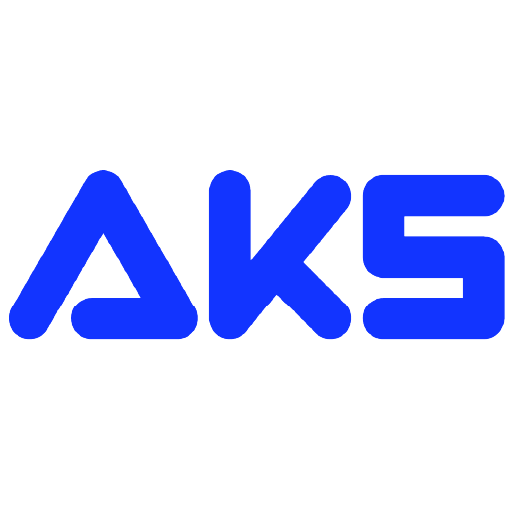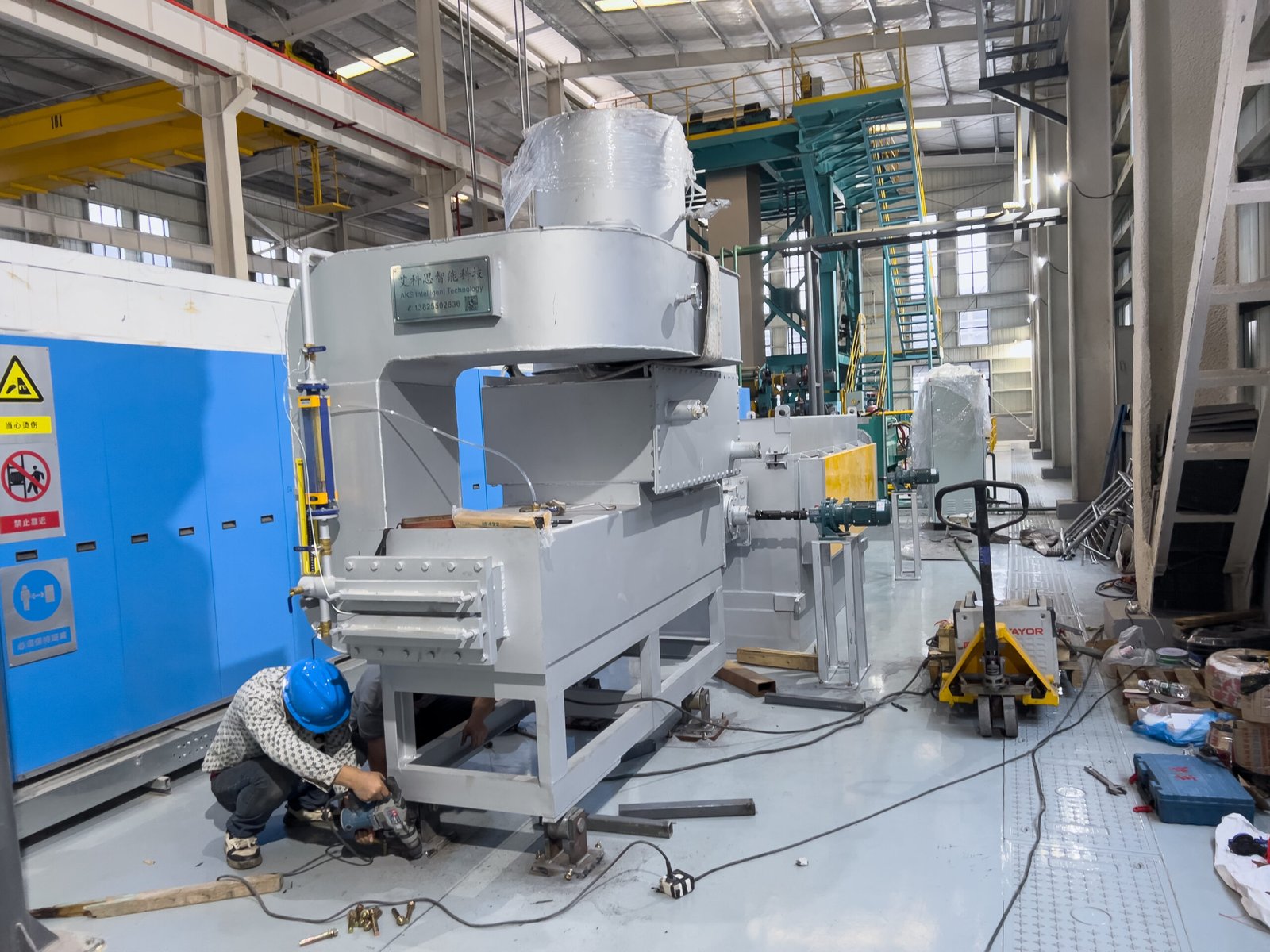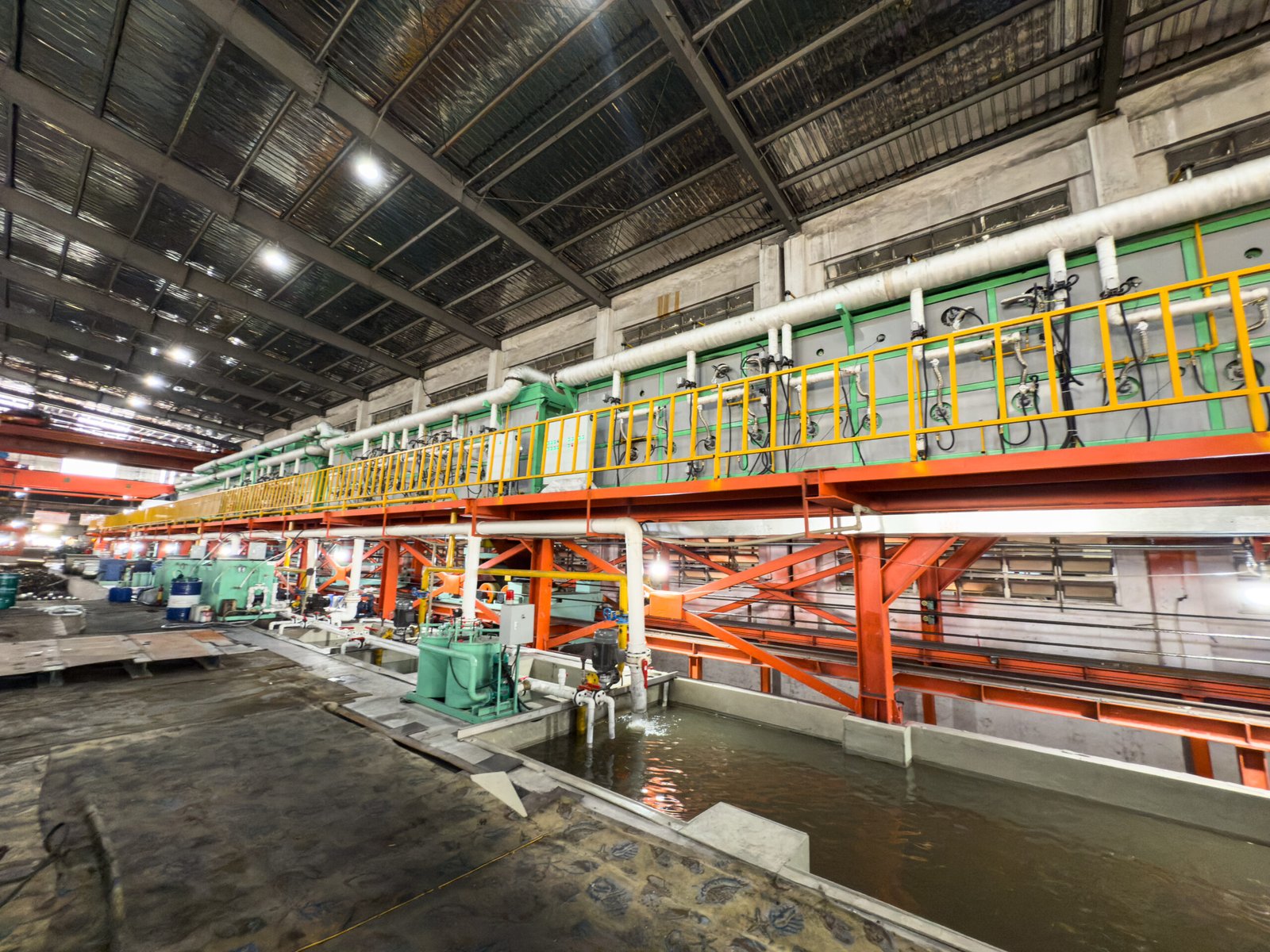What Are the Best Practices for Using a Hydrogen Atmosphere in Bright Annealing Stainless Steel Tubes?
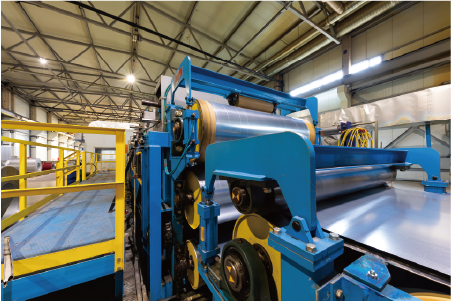

Struggling to achieve that perfect, mirror-like finish on your stainless steel tubes? You invest in high-quality materials, only for the annealing process to leave them dull, oxidized, or inconsistent. This frustration leads to high rejection rates, wasted resources, and damage to your brand’s reputation for quality.
The best practices for using a hydrogen atmosphere involve maintaining a high-purity hydrogen supply (typically >99.99%), ensuring a low dew point (below -60°C) inside the furnace to prevent oxidation, and precisely controlling furnace temperature and cooling rates to achieve the desired metallurgical properties and a brilliant finish.
This challenge is something I encounter frequently in my conversations with clients. Many manufacturers know the potential of bright annealing but find the execution riddled with complexities. It's not just about using hydrogen; it's about mastering the environment within the furnace. Understanding these nuances is the first step toward transforming your production outcomes. In this article, I'll walk you through the very same best practices we implement at AKS, turning production headaches into a competitive advantage for our partners worldwide. Let's dive deeper into how you can harness the full power of hydrogen for flawless results.
At AKS, our philosophy extends beyond simply selling equipment. We see ourselves as partners in our clients' success, which requires a deep, critical understanding of the processes our furnaces enable. The choice of a hydrogen atmosphere, for instance, is not a one-size-fits-all solution. While its reducing power is unparalleled for stainless steel, its application demands a rigorous approach to safety, cost-benefit analysis, and process control. We guide our clients to consider the total cost of ownership, which includes the expense of high-purity hydrogen and the sophisticated safety systems required. We encourage a critical evaluation: does the end-product's market value justify the operational costs and complexities? For a client in the medical device industry, the immaculate finish is non-negotiable. For others, a dissociated ammonia atmosphere might offer a more balanced cost-to-quality ratio. This dialectical approach—weighing the ideal against the practical—is embedded in how we design our furnaces, incorporating features like advanced gas monitoring and automated safety shut-offs that make the ideal process both achievable and secure.
Why is hydrogen atmosphere preferred for annealing stainless steel tubes?
Are you finding it difficult to eliminate stubborn oxide layers1 on your stainless steel tubes? This often results in a lackluster finish that doesn't meet premium market standards, forcing you to re-process materials or sell at a lower price point. Adopting a pure hydrogen atmosphere is the solution.
A hydrogen atmosphere is preferred because of its powerful reducing capabilities, which actively remove surface oxides from stainless steel at annealing temperatures. This chemical reaction results in an exceptionally clean, bright, and mirror-like surface finish that is unattainable with most other atmospheres, enhancing both appearance and performance.
The preference for a hydrogen atmosphere isn't just about achieving a shiny surface; it's a strategic choice rooted in metallurgy and market demands. For manufacturers of high-value products like automotive components, precision instrumentation, or decorative tubing, the finish is a direct reflection of quality. A flawed or inconsistent surface can lead to product rejection and loss of customer trust. Hydrogen's ability to act as a potent reducing agent means it doesn't just prevent oxidation; it actively reverses it. When stainless steel is heated, chromium and iron oxides can form, even with trace amounts of oxygen. Hydrogen reacts with these oxides, stripping the oxygen away to form water vapor (H₂O), which is then purged from the furnace. This purification process is what creates the signature "bright" finish. This level of chemical cleaning ensures that the final product has superior corrosion resistance and a pristine appearance. At AKS, we design our bright annealing furnaces with this principle in mind, ensuring a sealed, contamination-free environment where hydrogen can perform its function with maximum efficiency. This commitment to creating the ideal atmosphere is why our clients can consistently produce tubes that meet the most stringent international standards.
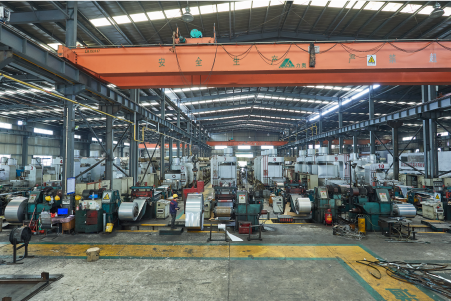
The decision to invest in a hydrogen-based annealing system is a critical one, and it's a conversation I have regularly with factory owners. A few years ago, I worked with a client in Southeast Asia, a rising star in the stainless steel tubing market for high-end kitchenware. They were struggling to break into the European market because their products, while structurally sound, lacked the flawless, brilliant finish their competitors were achieving. Their existing furnaces used a dissociated ammonia atmosphere, which, while cost-effective, couldn't consistently eliminate the subtle chromium oxide layer, leaving a slightly hazy surface. This small imperfection was a major barrier to their growth. They were caught in a classic manufacturing dilemma: continue with a lower-cost but limiting process, or invest in a more advanced technology that carried higher operational costs and required more stringent safety protocols. The transition to a pure hydrogen atmosphere was, for them, a significant leap. It required not only a new furnace but also a shift in their operational mindset, focusing on gas purity, dew point monitoring, and rigorous safety procedures. It’s a journey that goes beyond just hardware; it’s about embracing a more precise and controlled manufacturing philosophy. We worked closely with their team, providing not just the furnace but comprehensive training on handling hydrogen safely and optimizing the process parameters. The results were transformative. Within six months of commissioning their new AKS bright annealing furnace, their rejection rate for surface defects dropped by over 90%, and they secured their first major contract with a German kitchenware brand. This story illustrates a crucial point: the choice of atmosphere is directly tied to business ambition.
The Unmatched Reducing Power of Hydrogen
Hydrogen's efficacy stems from its fundamental chemical properties. At the typical annealing temperatures for austenitic stainless steels (around 1040°C to 1150°C), hydrogen is a highly effective reducing agent for the oxides of iron (FeO) and chromium (Cr₂O₃), the primary components that can dull the surface. The chemical reactions, FeO + H₂ → Fe + H₂O and Cr₂O₃ + 3H₂ → 2Cr + 3H₂O, are thermodynamically favored at these temperatures. For this reaction to proceed effectively, the atmosphere must be exceptionally dry, meaning it must have a very low dew point. The presence of water vapor (H₂O) can shift the equilibrium of the reaction, inhibiting the reduction of chromium oxide. This is why maintaining a dew point of -60°C or lower inside the furnace muffle is critical—a standard our AKS furnaces are engineered to exceed.
This reducing action provides a distinct advantage over inert atmospheres like pure argon or nitrogen. While inert gases can prevent further oxidation from occurring, they cannot reverse oxidation that has already formed or that results from residual oxygen within the furnace. They merely provide a passive shield. Hydrogen, in contrast, provides an active "cleaning" service at a molecular level. It purges the surface of oxygen, leaving behind pure, unoxidized metal that crystallizes into a smooth, highly reflective surface upon cooling. This is particularly vital for 300-series stainless steels, where chromium content is high and the risk of forming a tenacious chromium oxide layer is significant.
A practical case I often reference is a manufacturer of stainless steel hydraulic tubing we partnered with. Their application demanded not only perfect surface brightness for inspection purposes but also enhanced corrosion resistance to withstand harsh operating environments. Their previous process left microscopic oxides on the surface, which became initiation sites for pitting corrosion. After implementing an AKS hydrogen annealing line with precise dew point control, they observed a measurable improvement in the salt spray test performance of their tubes. This wasn't just an aesthetic upgrade; the hydrogen atmosphere directly enhanced the material's functional properties by creating a truly passive, oxide-free surface, proving that the right atmosphere is a cornerstone of performance engineering.
Achieving Superior Surface Brightness and Lustre
The term "bright annealing" is quite literal when a pure hydrogen atmosphere is used correctly. The resulting surface is not merely clean but possesses a high specular reflectivity, often described as a mirror-like finish. This luster is a direct result of the fine-grained, smooth surface created during the recrystallization process in an oxygen-free environment. When the steel is cooled correctly in the hydrogen atmosphere, its surface remains pristine, without the microscopic peaks and valleys that scatter light and create a dull appearance. The Advanced Cooling System in our AKS furnaces is designed precisely for this, using controlled jet cooling to ensure the tube cools below its oxidation threshold before it ever leaves the protective atmosphere.
The visual quality achieved with hydrogen is nearly impossible to replicate with other methods without resorting to secondary mechanical or chemical polishing. Such post-processing steps add significant cost, introduce process variability, and can even compromise the dimensional tolerances of precision tubes. For a client producing architectural and decorative stainless steel tubes, the ability to achieve a final-polish look directly from the furnace was a game-changer. It eliminated an entire stage of their production line, reducing labor costs, material handling, and potential for scratches, ultimately increasing their net profitability per ton of steel processed.
Below is a comparative analysis of common atmospheres used in annealing, which clearly illustrates why hydrogen stands out for high-end applications.
| Feature | Pure Hydrogen (H₂) | Dissociated Ammonia (75% H₂ / 25% N₂) | Pure Nitrogen (N₂) |
|---|---|---|---|
| Reducing Potential | Very High | High | Inert (None) |
| Resulting Surface Finish | Mirror-like, brilliant | Very bright, sometimes hazy | Clean, but not bright |
| Dew Point Control | Critical (<-60°C) | Important (<-40°C) | Less Critical |
| Gas Cost | High | Low | Medium |
| Safety Requirements | High (Explosive) | Medium (Flammable, Toxic) | Low |
| Ideal Application | 300/400 Series SS, Medical, Automotive | 300/400 Series SS, General Use | Ferritic SS, Non-critical applications |
This table codifies the trade-offs I discuss with clients. While dissociated ammonia is an excellent and economical choice for many applications, achieving that premium, top-tier finish demanded by luxury goods or critical components often necessitates the uncompromising purity of a hydrogen atmosphere.
Enhancing Mechanical Properties and Performance
Beyond the surface finish, a hydrogen atmosphere contributes positively to the final mechanical properties of the stainless steel tube. The process ensures complete and uniform recrystallization of the cold-worked grain structure, resulting in optimal ductility, formability, and a reduction in internal stresses. Because the heat transfer coefficient of hydrogen is nearly seven times that of nitrogen, it facilitates more rapid and uniform heating and cooling. This allows for precise control over the annealing cycle, ensuring that every part of the tube—from its outer surface to its core—reaches the target temperature and is cooled appropriately. This uniformity is key to preventing inconsistencies in hardness and tensile strength along the length of the tube.
One of our clients, a producer of stainless steel tubing for high-pressure fuel injection systems, relies on this uniformity. Any variation in mechanical properties could lead to catastrophic failure in the final application. By using an AKS bright annealing furnace with a hydrogen atmosphere, they can achieve a consistent hardness value with minimal deviation batch after batch. The rapid cooling capabilities, managed by our advanced control systems, help lock in the desired austenitic structure without the formation of undesirable phases like carbides, which can compromise both corrosion resistance and mechanical integrity.
Furthermore, the clean, oxide-free surface produced in a hydrogen atmosphere is ideal for subsequent processing steps like welding, brazing, or coating. The absence of an oxide layer ensures better adhesion and weld penetration, leading to stronger and more reliable joints. For manufacturers who are part of a complex supply chain, delivering a product that is perfectly prepared for the next stage of fabrication is a significant value-add. It streamlines their customers' operations and solidifies their position as a preferred supplier. This holistic view—understanding how the annealing process impacts not just the tube itself but its performance in the entire value chain—is what separates good manufacturing from great manufacturing.
Hydrogen removes oxidesTrue
Hydrogen actively reduces iron and chromium oxides during annealing, creating a clean surface.
Nitrogen reverses oxidationFalse
Nitrogen is inert and only prevents oxidation but cannot remove existing oxides like hydrogen does.
What challenges arise when bright annealing stainless steel tubes in a hydrogen atmosphere?
Thinking about adopting a hydrogen atmosphere for annealing, but concerned about the operational hurdles? The prospect of handling a highly flammable gas and the precision required can be daunting, potentially leading to safety risks or subpar results if not managed correctly. This is where expertise becomes crucial.
The primary challenges include managing the high flammability and explosive risk of hydrogen, which necessitates robust safety systems. Additionally, maintaining the required low dew point (high gas purity) to prevent oxidation and dealing with the potential for hydrogen embrittlement in certain steel grades are significant operational hurdles.
These challenges, while significant, are entirely manageable with the right equipment and knowledge. I've seen many clients hesitate, fearing the complexity. However, the core of the issue isn't the hydrogen itself, but the control over the environment in which it's used. A well-designed furnace mitigates these risks through engineering controls, turning a potentially hazardous process into a safe and repeatable one. The journey to flawless bright annealing involves confronting these challenges head-on. By understanding the specific risks—from gas leaks to atmospheric contamination—we can build systems and protocols that ensure both the safety of your personnel and the quality of your products. It's a solvable problem, and the rewards in terms of product quality are immense.
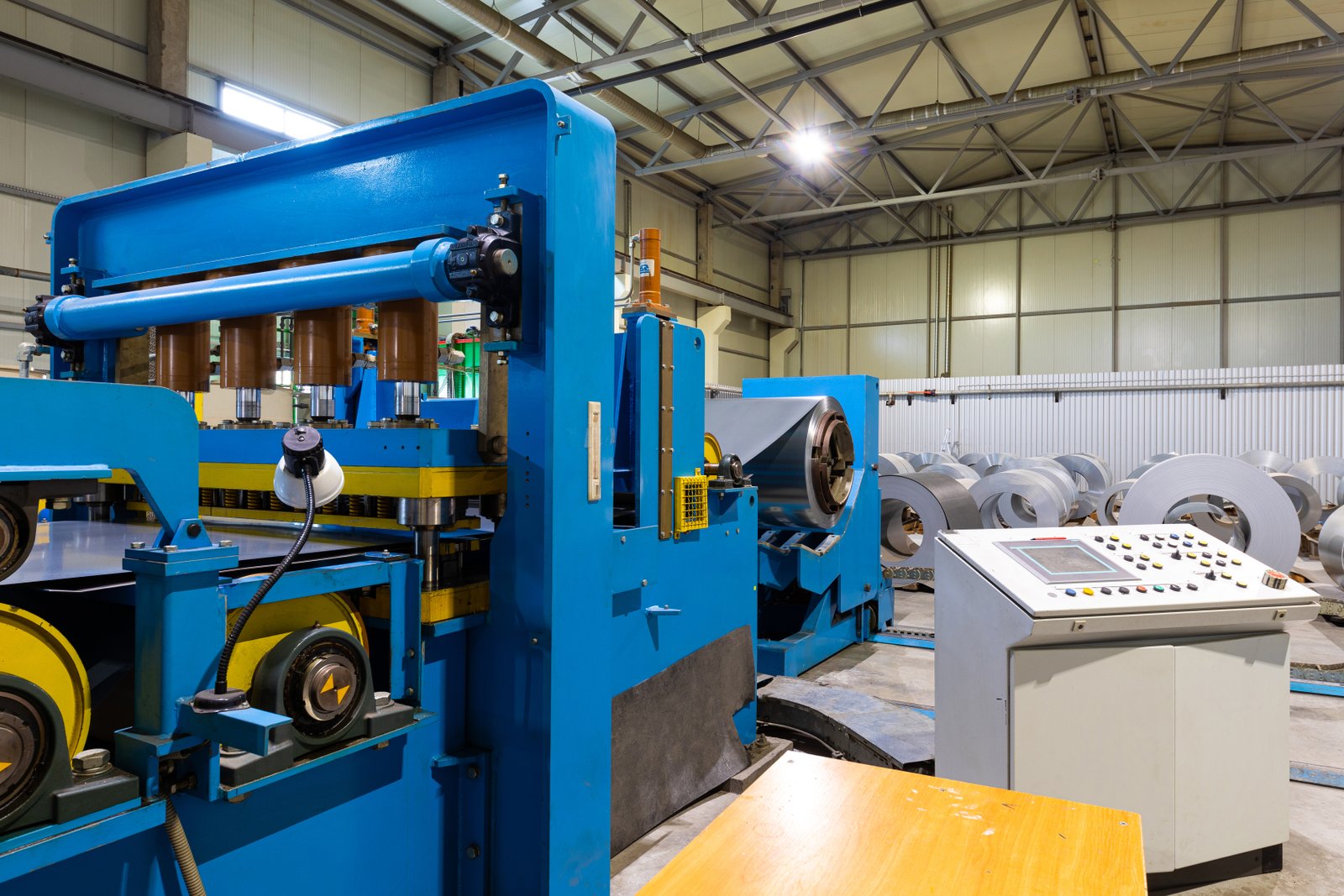
The transition to a hydrogen-based process is often perceived as a major leap, and rightfully so. It demands a higher level of operational discipline. I recall a consultation with a large-scale manufacturer of stainless steel tubes for the automotive sector in India. They were producing components for exhaust systems and needed to meet stringent European quality standards for surface finish and durability2. Their ambition was to become a Tier 1 supplier, but their current annealing process was a bottleneck. The prospect of introducing pure hydrogen into their bustling facility was a source of great anxiety for their safety managers and production engineers. They were concerned about potential leaks, the cost of high-purity gas, and the extensive training required for their workforce. These are not trivial concerns; they are at the heart of responsible manufacturing. My role, and the role of my team at AKS, was to demystify the process for them. We didn't just talk about the furnace; we talked about the entire ecosystem. This included mapping out gas delivery and storage, specifying leak detection sensors, designing ventilation systems, and developing standard operating procedures (SOPs) for both normal operation and emergency scenarios. We showed them how modern furnace design, like ours, incorporates multiple layers of safety. For instance, our furnaces maintain positive pressure within the muffle, ensuring that any potential leak is outwards, not inwards, while nitrogen purging systems stand ready to automatically flood the chamber and neutralize the atmosphere if any parameter deviates from the safe setpoints. By breaking down the challenge into manageable components and providing a clear, engineered solution for each, we were able to build their confidence. They saw that with the right technology and support, hydrogen annealing was not an unacceptable risk, but a controlled, high-value process.
Managing the Inherent Flammability and Safety Risks
Hydrogen is the lightest element and has a very wide flammability range in air (4% to 75%), making leak prevention and management the top priority. The primary challenge is ensuring the absolute integrity of the furnace and the gas supply lines. At AKS, we address this by using high-quality, seamless stainless steel tubing for all gas conduits and employing orbital welding techniques to create permanent, leak-proof joints. Every furnace we build undergoes rigorous pressure and leak testing before it leaves our facility. The furnace muffle, typically made of high-temperature alloys like 310S or Inconel, is designed to remain sealed and operate under slight positive pressure, ensuring that atmospheric air cannot ingress into the hot zone where it could mix with hydrogen to form an explosive mixture.
Beyond passive design features, active safety systems are non-negotiable. Our furnaces are equipped with a suite of sensors and automated controls. Hydrogen detectors are placed at strategic points around the furnace and gas control cabinet. If a leak is detected, an alarm sounds, and the system automatically initiates a safety shutdown sequence. This sequence involves immediately stopping the hydrogen flow and activating a high-volume nitrogen purge to inert the furnace chamber, rendering the atmosphere safe. This automated response removes the potential for human error in a critical situation.
Furthermore, proper operational protocols are a key pillar of safety. We work with our clients to develop comprehensive training programs for their operators. This training covers the properties of hydrogen, safe handling procedures, startup and shutdown sequences, and emergency response drills. A typical startup protocol, for instance, involves purging the furnace with inert nitrogen first to reduce the oxygen level to a safe threshold (typically <1%) before introducing hydrogen. Similarly, the shutdown protocol involves purging with nitrogen again to remove all hydrogen before the furnace is opened to the air. This disciplined, protocol-driven approach is what transforms hydrogen from a hazard into a powerful industrial tool.
The Criticality of Dew Point and Atmosphere Purity
While safety is paramount, the second major challenge is maintaining the pristine atmospheric conditions required for bright annealing. As discussed earlier, the presence of oxygen or water vapor will ruin the "bright" finish, especially on high-chromium stainless steels. The key parameter to monitor and control is the dew point, which is a direct measure of the water vapor content in the atmosphere. To effectively reduce chromium oxide, the furnace atmosphere must maintain a dew point below -60°C. Achieving this requires a multi-faceted approach. It starts with the hydrogen supply itself, which must be of high purity (99.99% or higher).
The furnace design plays a crucial role in preventing contamination. Any microscopic leak, or outgassing from furnace materials like insulation, can introduce impurities and raise the dew point. This is why we use high-density ceramic fiber insulation with low binder content and ensure all internal components are thoroughly cleaned and baked out before commissioning. The furnace muffle must be perfectly sealed. The integrity of welds, flanges, and sensor ports is critical. We use advanced sealing technologies and perform helium leak checks on critical assemblies to guarantee a gas-tight chamber.
A client producing medical-grade capillary tubes faced this exact issue. Even minute surface discoloration was cause for rejection. They found that their dew point would inexplicably rise mid-cycle. After a thorough audit, we discovered that the source of moisture was not a leak, but improperly dried components entering the furnace. They were introducing a small amount of water vapor with each batch. The solution was to add a pre-heating and drying stage before the tubes entered the main annealing chamber. This simple process change, combined with the superior sealing of their new AKS furnace, stabilized their dew point at -65°C, completely eliminating surface oxidation and bringing their batch acceptance rate to nearly 100%.
The Risk of Hydrogen Embrittlement
A more nuanced metallurgical challenge is the potential for hydrogen embrittlement. This phenomenon occurs when atomic hydrogen diffuses into the metal's crystal lattice, reducing its ductility and making it brittle. While austenitic stainless steels (like the 300 series) are generally not susceptible to hydrogen embrittlement at room temperature, other grades, particularly martensitic (like the 400 series) and some ferritic stainless steels, can be vulnerable, especially if they are high-strength. The risk increases as the strength of the steel and the hydrogen exposure time and pressure increase.
The annealing process itself, being at high temperature, allows hydrogen to diffuse in, but also readily diffuse out. The primary risk occurs during cooling. If the steel is cooled too quickly in the hydrogen atmosphere, hydrogen can become trapped in the lattice. Therefore, the cooling cycle must be carefully controlled. For susceptible grades, the best practice is to switch the atmosphere from hydrogen to 100% nitrogen once the material is below the sensitizing temperature range but still hot enough to allow trapped hydrogen to diffuse out. This "nitrogen flush" during the cooling phase is a critical step for mitigating embrittlement risk.
We encountered this with a customer manufacturing high-strength 420 stainless steel components for cutting tools. Their initial trials with hydrogen annealing resulted in parts that were bright but failed quality control tests for toughness. They were experiencing classic hydrogen embrittlement. By working with them to modify their annealing cycle on their AKS furnace—specifically, programming a switch to a pure nitrogen atmosphere at around 600°C during the cooling stage and holding it there for a period—we were able to solve the problem. The parts retained their bright finish while recovering their required mechanical toughness. This highlights the importance of a deep understanding of metallurgy; the furnace is a tool, but its successful application depends on tailoring the process to the specific material being treated.
Hydrogen is highly flammableTrue
Hydrogen has a wide flammability range in air (4% to 75%), making leak prevention critical for safety.
All stainless steels resist hydrogen embrittlementFalse
Martensitic and some ferritic stainless steels can be vulnerable to hydrogen embrittlement, unlike austenitic grades.
How does hydrogen influence the quality and characteristics of annealed stainless steel?
Are your finished stainless steel products failing to meet customer expectations for quality? Inconsistent hardness, poor formability, or a dull surface can severely impact your market competitiveness, leading to lost sales and a damaged reputation. The key lies in the annealing atmosphere.
Hydrogen profoundly influences quality by creating a pristine, oxide-free surface, which results in superior brightness, enhanced corrosion resistance, and improved weldability. It also ensures uniform heat treatment, leading to consistent mechanical properties like ductility and hardness throughout the material for predictable performance.
This influence extends from the visible surface right down to the microscopic grain structure. When I work with clients, I emphasize that bright annealing3 in hydrogen is not merely a finishing step; it's a transformative process that redefines the material's character. The removal of surface oxides eliminates potential failure points, while the uniform heating and cooling cycles refine the grain structure for optimal performance. This deep-seated impact is what allows manufacturers to produce not just a visually appealing product, but a functionally superior one that can command a premium price and build lasting customer loyalty.
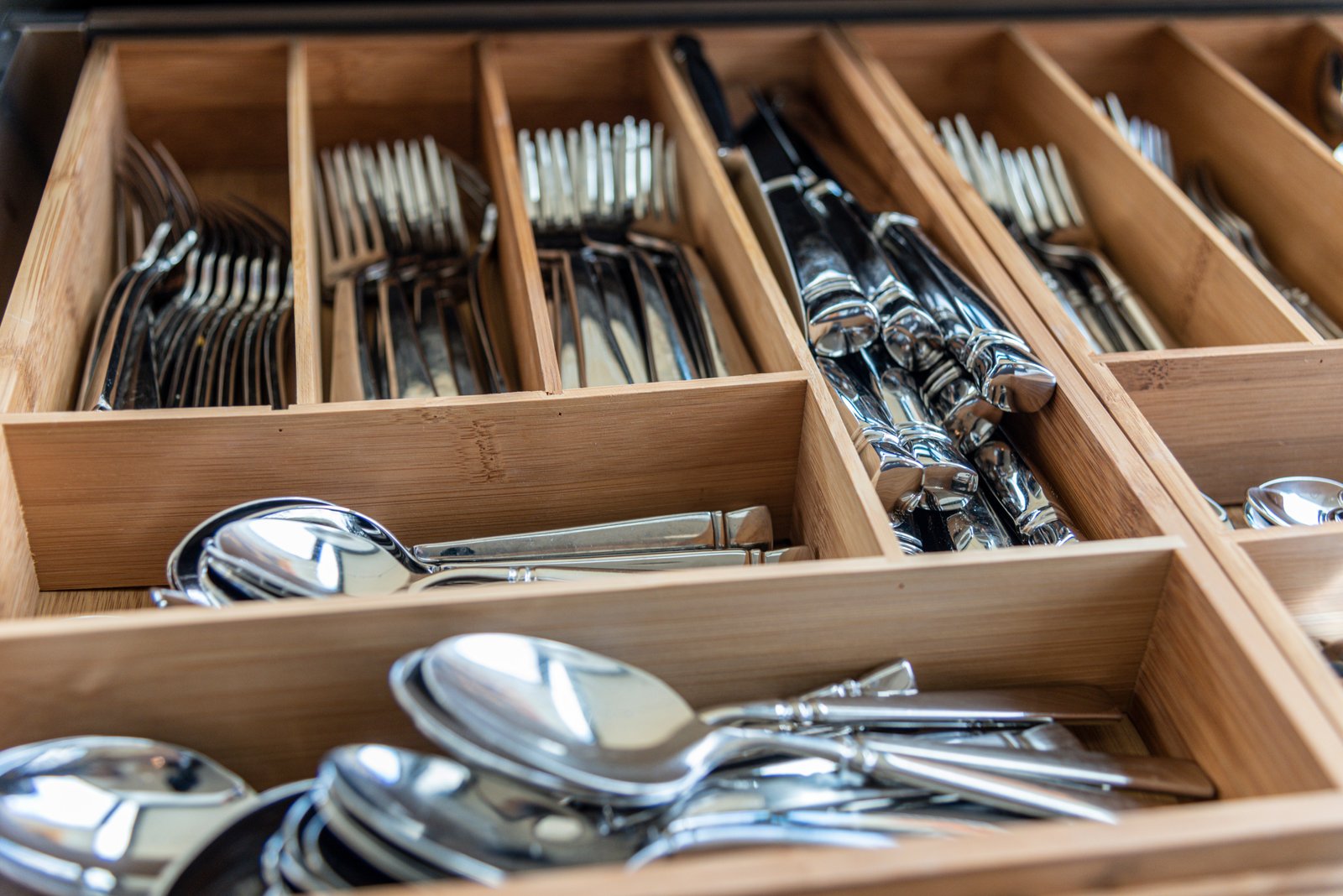
Understanding the full impact of hydrogen requires looking beyond the obvious mirror finish. It’s about connecting the chemistry of the furnace atmosphere to the final performance of the product in the real world. A compelling example comes from a partnership we have with a manufacturer of precision bellows and expansion joints. These components are critical in aerospace and industrial applications, where they must endure thousands of cycles of flexing and vibration without failing. The material's ductility and fatigue life are paramount. Before switching to an AKS hydrogen furnace, they were battling inconsistencies in the formability of their annealed stainless steel strip. Some batches would form perfectly, while others would crack during the hydroforming process, leading to unpredictable yields and production delays. The root cause was traced back to non-uniform annealing. Their previous furnace had poor temperature uniformity, and the atmosphere wasn't clean enough, resulting in subtle variations in the grain structure and microscopic surface defects. By transitioning to a hydrogen atmosphere, they benefited from two key factors. First, the high thermal conductivity of hydrogen ensured every inch of the steel strip was heated and cooled at the exact same rate, leading to a perfectly homogenous, fine-grained microstructure. Second, the reducing atmosphere created an ultra-clean surface, free from the microscopic stress risers that can initiate fatigue cracks. The result was a dramatic increase in the fatigue life of their bellows and a forming rejection rate that fell to near-zero. This demonstrates how a hydrogen atmosphere directly engineers superior mechanical characteristics into the final product.
Creation of a Passive, Corrosion-Resistant Surface
The primary benefit of a hydrogen atmosphere is its ability to create a truly "passive" surface on stainless steel. Passivity is the property that gives stainless steel its corrosion resistance. It relies on the formation of a very thin, invisible, and continuous layer of chromium oxide on the surface. Paradoxically, to achieve this ideal passive layer, one must first remove all the flawed, non-uniform oxides that form during heating. A hydrogen atmosphere does exactly this by reducing all iron and chromium oxides at high temperatures. As the steel cools in the oxygen-free environment, it emerges perfectly clean. When this ultra-clean surface is finally exposed to air, it instantly forms a fresh, uniform, and highly effective passive layer of chromium oxide.
This is fundamentally different from what happens in a less-than-perfect atmosphere. If oxygen or moisture is present during annealing, a thicker, less-adherent, and non-uniform oxide scale is formed. This scale is not protective and can actually trap contaminants and create sites for localized corrosion, such as pitting or crevice corrosion. So, by starting with a chemically pure surface, hydrogen annealing ensures the "self-healing" nature of stainless steel works to its maximum potential.
We saw this effect firsthand with a client who manufactures stainless steel tubing for desalination plants. The high-chloride environment is incredibly corrosive, and the lifespan of the tubing is a critical factor. Tubes annealed in their older, less-controlled furnace showed premature pitting corrosion. After installing an AKS continuous bright annealing line with a high-purity hydrogen atmosphere, their own internal salt spray tests showed a 30% improvement in the time to first pitting. This tangible enhancement in corrosion resistance opened up new, more demanding market segments for them, proving that the investment in atmospheric control pays dividends in product performance and durability.
Attainment of Homogenous Grain Structure and Ductility
The mechanical properties of stainless steel, such as its strength, hardness, and ductility (its ability to be bent or formed without breaking), are dictated by its microstructure—specifically, the size and shape of its crystalline grains. The purpose of annealing is to reverse the effects of cold working (like rolling or drawing), which elongates the grains and makes the material hard and brittle. Annealing allows new, stress-free, equiaxed (equal-sided) grains to form in a process called recrystallization. For optimal formability, this new grain structure should be fine and uniform throughout the material.
Hydrogen's high thermal conductivity plays a vital role here. It transfers heat far more efficiently than nitrogen or air. This means that when a stainless steel tube enters the hot zone of the furnace, it heats up to the target annealing temperature very quickly and, more importantly, very uniformly from its outer surface to its core. This uniform heating promotes simultaneous recrystallization across the entire cross-section of the tube, leading to a homogenous grain structure. In contrast, in an atmosphere with poor thermal conductivity, the surface can overheat while the core lags behind, resulting in a mixed grain structure and inconsistent mechanical properties.
A customer producing deep-drawn stainless steel sinks provided a perfect case study. They needed the annealed steel blanks to be extremely ductile to withstand the severe stretching of the drawing process. Inconsistent ductility led to torn corners and a high scrap rate. By implementing an AKS furnace with a hydrogen atmosphere, the superior heat transfer ensured a perfectly uniform, fine-grained microstructure in every blank. Their press operators reported a much more predictable material response, and scrap rates due to material failure fell by over 75%. This consistency is a direct result of the homogenous microstructure engineered by the hydrogen annealing process.
Elimination of Post-Annealing Cleaning and Polishing
A significant, and often underestimated, impact of hydrogen annealing is on the overall production workflow and cost. Because the process yields a clean, bright, and scale-free surface, it can completely eliminate the need for costly and time-consuming secondary cleaning operations. Traditional annealing processes often leave behind a dark oxide scale that must be removed through aggressive methods like acid pickling, shot blasting, or mechanical grinding. These processes are not only expensive in terms of labor, materials (acids, abrasives), and equipment, but they also pose environmental and safety challenges related to chemical handling and waste disposal.
Acid pickling, for example, can alter the surface texture and, if not perfectly controlled, can even lead to intergranular attack, compromising the material's integrity. Mechanical polishing adds process time and can be challenging to apply uniformly, especially on complex shapes. By delivering a product that is already finished and ready for the next stage of fabrication or assembly, hydrogen bright annealing streamlines the entire production chain.
I often use a simple cost analysis with my clients to illustrate this point. We take their current costs for annealing, add the costs for acid pickling (including chemical procurement, waste treatment, and labor), and the associated material handling steps. We then compare this to the all-in cost of operating a hydrogen bright annealing furnace. For a manufacturer of decorative tubing, we calculated that the savings from eliminating just the pickling and polishing stages resulted in a payback period of less than two years for their investment in a new AKS furnace. This demonstrates that the influence of hydrogen is not just metallurgical; it's profoundly economic, reducing operational complexity and cost while simultaneously increasing product quality.
Hydrogen creates oxide-free surfacesTrue
Hydrogen annealing reduces surface oxides, enabling formation of a fresh chromium oxide layer that enhances corrosion resistance.
Hydrogen decreases thermal conductivityFalse
Hydrogen actually has high thermal conductivity, which promotes uniform heating and consistent grain structure during annealing.
What are the recommended best practices for using hydrogen in annealing processes?
To achieve truly exceptional results in bright annealing, are you simply using hydrogen or are you mastering it? Many manufacturers use a hydrogen atmosphere but still struggle with inconsistent finishes, wasted gas, and safety concerns. The difference lies in moving from basic use to implementing proven best practices.
Recommended best practices include using high-purity >99.99% hydrogen, maintaining a furnace dew point below -60°C, implementing a stringent safety protocol with automated purging and leak detection, and optimizing temperature and cooling profiles specific to the steel grade for consistent metallurgical results and a brilliant finish.
Adopting these practices transforms the annealing process from a variable art into a repeatable science. It’s about creating an environment of total control within the furnace. When I visit our clients' facilities, the most successful ones are those who treat atmospheric control with the same rigor as they do their metallurgical specifications. They understand that the gas they use is as critical an ingredient as the steel itself. By integrating these best practices into your standard operating procedures, you establish a foundation for safety, quality, and efficiency that will set your products apart in a competitive market.
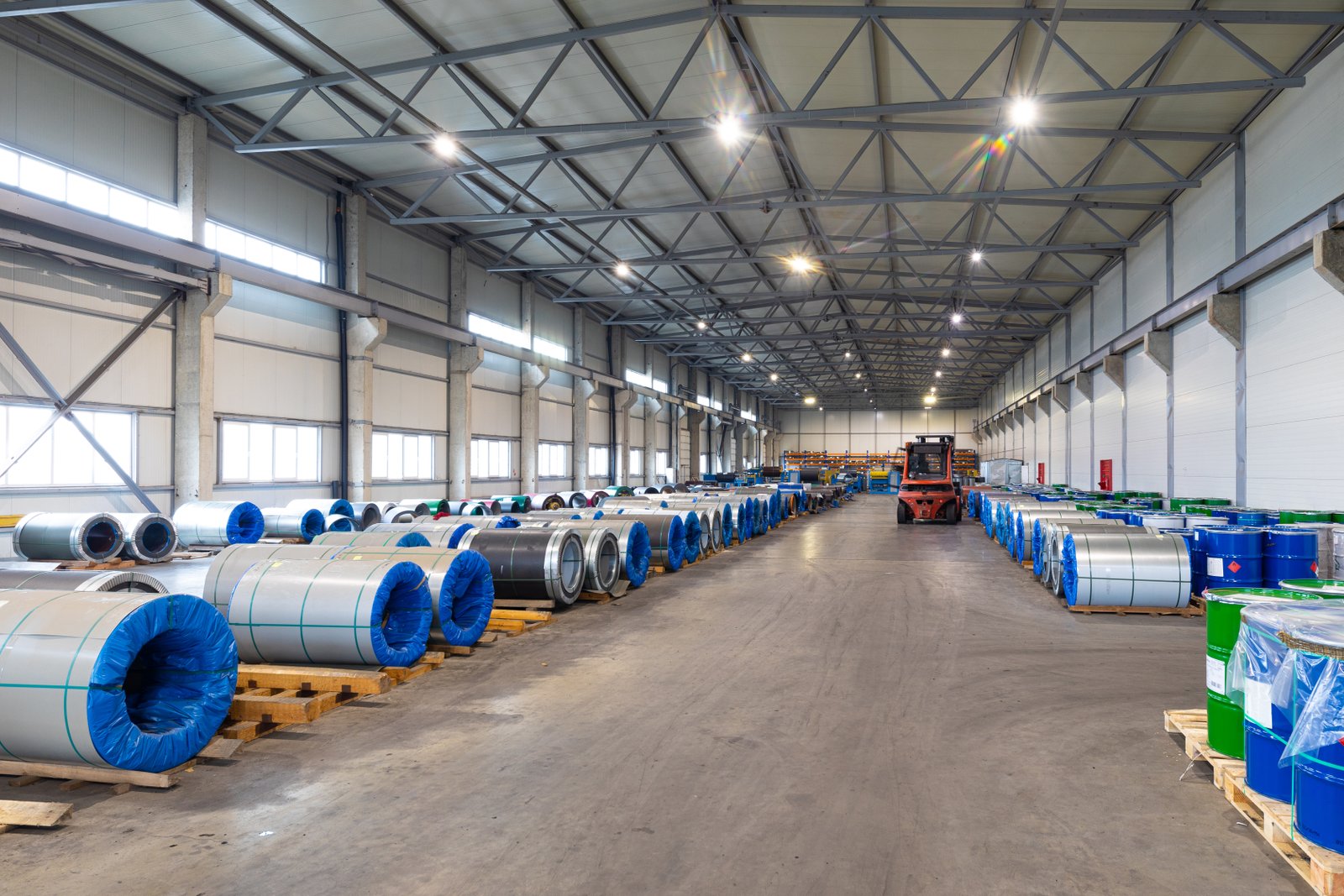
Implementing best practices is a journey of continuous improvement, not a one-time setup. It requires a synergy between equipment, process, and people. I worked closely with a company that manufactures stainless steel wire for high-end springs and woven meshes. Their initial foray into hydrogen annealing was met with mixed success. While some batches were perfect, others came out dull or had inconsistent tensile strength. Their team was frustrated, and they were consuming more hydrogen than projected. The problem wasn't their furnace's capability but their process control. They were not consistently verifying the purity of their incoming hydrogen, and their startup procedure wasn't effective enough at purging residual oxygen, causing their dew point to be erratic. Together, we established a new set of best practices. We implemented a simple incoming gas quality check using a portable analyzer. We refined their startup sequence, increasing the nitrogen purge time and adding a verification step with an oxygen sensor to ensure the chamber was inert before hydrogen was introduced. We also optimized the gas flow rate, reducing it to the minimum required to maintain positive pressure and the target dew point, which significantly cut their hydrogen consumption. This disciplined, data-driven approach stabilized their process entirely. Their quality became predictable, their operational costs decreased, and their team gained the confidence that comes from truly mastering a process. It’s a powerful reminder that the best equipment is only as good as the practices that govern its use.
Stringent Control of Gas Purity and Dew Point
The absolute cornerstone of successful hydrogen annealing is atmospheric integrity. This begins with the gas source. Best practice dictates using hydrogen with a minimum purity of 99.999% (often called 5-nines purity4). While lower purities can be used, they introduce contaminants that must be managed. It is often more cost-effective to start with high-purity gas than to invest in complex purification systems. The gas supply lines must be made of non-porous materials like stainless steel and be free of any potential contaminants like oil or moisture.
Inside the furnace, the critical metric is the dew point. As a rule of thumb for 300-series stainless steel, the dew point must be maintained at or below -60°C to ensure the reduction of chromium oxide. For more sensitive alloys or for achieving the highest possible luster, targeting a dew point of -65°C or lower is recommended. This requires a furnace with exceptional sealing integrity and the use of high-quality online dew point analyzers. The sensor should be placed to get a representative reading of the atmosphere in the hot zone. Relying on manual, intermittent checks is not sufficient for a high-volume, quality-critical process.
At AKS, we integrate real-time dew point monitoring directly into our furnace control systems. The system can be programmed to alarm or even halt the process if the dew point rises above the specified setpoint, preventing the production of entire batches of defective material. This proactive control is a hallmark of a best-in-class operation. It shifts the focus from inspecting for quality after the fact to engineering quality into the process itself.
Optimized Furnace Temperature and Cooling Profiles
Bright annealing is not a single temperature process; it is a thermal profile. Best practices demand that this profile—heating rate, soaking time and temperature, and cooling rate—be precisely tailored to the specific grade of stainless steel and its final application. For example, a standard 304 stainless steel5 is typically annealed between 1040°C and 1120°C. The soaking time at this temperature must be long enough to ensure complete recrystallization and dissolution of carbides, but not so long as to promote excessive grain growth, which can reduce toughness.
The cooling rate is equally critical. For austenitic stainless steels, it must be rapid enough through the sensitization range (approximately 870°C to 425°C) to prevent the precipitation of chromium carbides at the grain boundaries. This precipitation depletes chromium from the surrounding area, dramatically reducing corrosion resistance. Our furnaces utilize an advanced cooling system with high-velocity gas jets precisely directed at the product. The flow rate and pressure of the cooling gas (which can be hydrogen or nitrogen) are meticulously controlled to achieve the optimal cooling curve for the specific product dimensions and material.
We provide our clients with a database of starting recipes for various steel grades, but we also empower them to optimize these profiles for their unique needs. For a manufacturer of thin-gauge stainless steel strip, we helped them develop a profile with a very rapid heating and cooling rate to maximize throughput without overheating the thin material. Conversely, for a client annealing heavy-walled tubes, the profile included a longer soak time and a more controlled cool to ensure thermal uniformity through the thick cross-section. This level of process customization is essential for achieving peak quality and efficiency.
A Comprehensive Safety Management System
Given hydrogen's flammability, a robust safety management system is not just a best practice; it is an absolute requirement. This system must be multi-layered, encompassing equipment design, automated controls, and operator protocols. The foundation is a furnace engineered for safety, featuring a leak-tight muffle, certified safety shut-off valves, and redundant sealing mechanisms. The entire gas delivery system, from the storage tanks to the furnace inlet, must be designed and maintained to prevent leaks.
The second layer is automated safety controls. This includes hydrogen and flame detectors interlocked with the main control system. An emergency purge system, typically using a large reservoir of nitrogen, must be capable of rapidly inerting the furnace chamber automatically in the event of a power failure, loss of furnace pressure, or detection of a hydrogen leak. Pressure relief valves and flame arrestors are also critical components to prevent over-pressurization and flashback.
The final, and perhaps most important, layer is the human element. All personnel involved in the operation and maintenance of the furnace must receive comprehensive training on the properties of hydrogen, the furnace's safety features, and the standard operating procedures (SOPs) for startup, shutdown, and emergency response. Regular safety drills and audits should be conducted to ensure that this knowledge is retained and that the safety systems are functioning correctly. When I commission a new furnace, I spend as much time training the operators and maintenance crew as I do tuning the process parameters. A confident, well-trained team is the ultimate safety feature.
Hydrogen purity should exceed 99.99%True
High-purity hydrogen (>99.99%) is essential for effective bright annealing to avoid contamination and ensure consistent results.
Dew point must be above -60°CFalse
The dew point should be maintained at or below -60°C to effectively reduce chromium oxide and achieve a bright finish.
How can manufacturers ensure optimal outcomes with hydrogen-based bright annealing?
Are you ready to elevate your production from simply acceptable to truly exceptional? Achieving optimal outcomes in hydrogen annealing isn't about a single piece of equipment; it's about creating a holistic system of excellence. Failure to do so can lead to missed quality targets and unrealized potential.
Manufacturers can ensure optimal outcomes by integrating advanced process control with a robust quality assurance program. This involves real-time monitoring of key parameters like dew point and temperature, combined with rigorous material testing and a commitment to continuous operator training and process refinement for peak performance.
This integration of technology and methodology is the true path to mastery. When I see clients achieve breakthrough results, it's because they've embraced this philosophy. They use the data from their furnace6 not just to control the process, but to understand it, refine it, and push the boundaries of quality. It’s a dynamic loop of control, verification, and improvement. This commitment is what transforms a bright annealing furnace from a production tool into a strategic asset that drives the business forward.
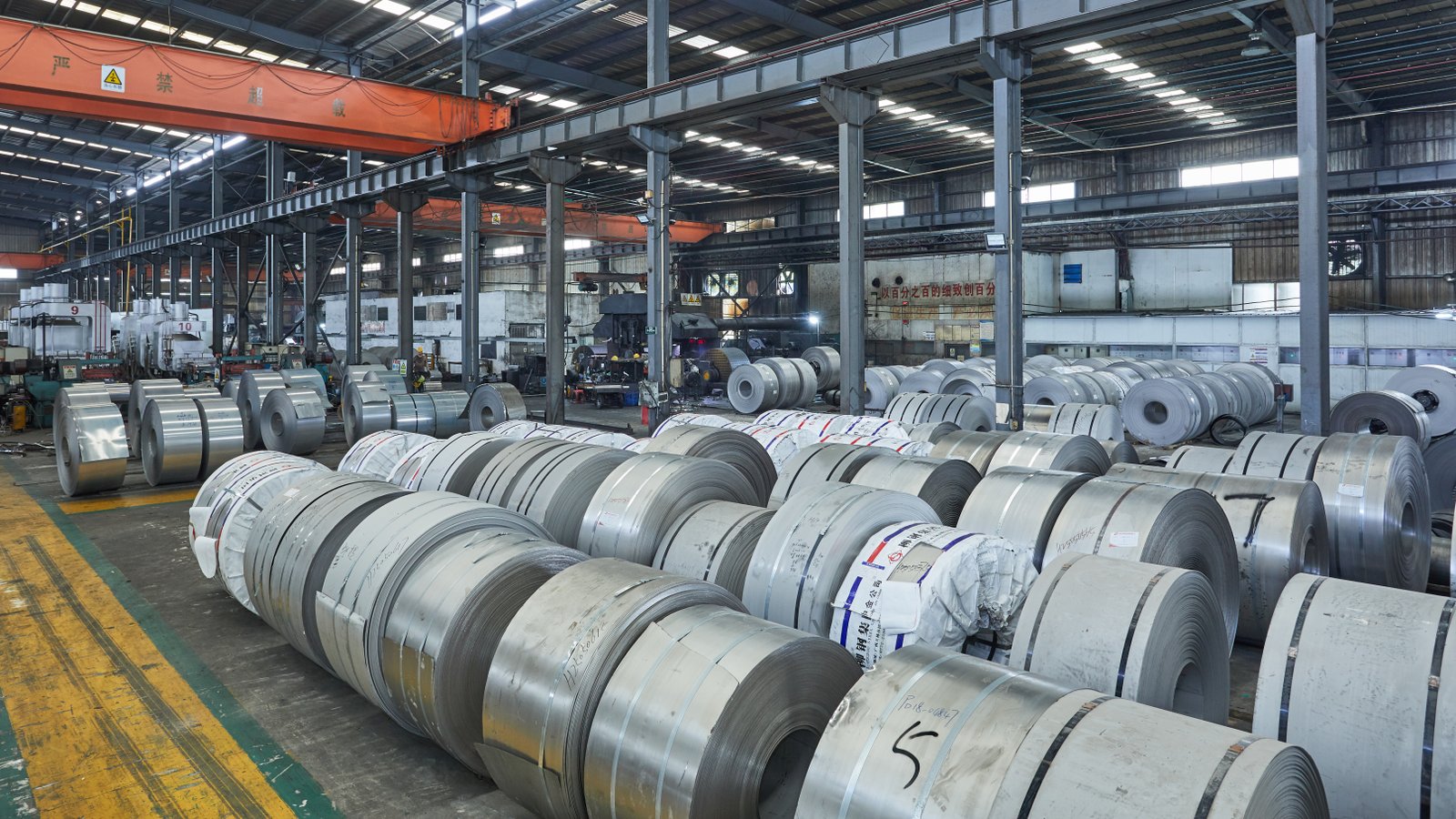
Ensuring consistently optimal outcomes is where leading manufacturers truly differentiate themselves. It’s a synthesis of the right technology, rigorous processes, and a culture of quality. I witnessed this firsthand with a leading European manufacturer of stainless steel tubes for the food and beverage industry. Their customers demand an immaculate internal surface finish to ensure cleanability and prevent bacterial growth. For them, "optimal" was not a subjective term but a measurable set of parameters related to surface roughness (Ra), cleanliness, and corrosion resistance. They didn't just purchase a furnace; they partnered with us to build a complete "quality ecosystem" around it. Their approach was threefold. First, they invested in an AKS furnace with the most advanced sensor package7 available, including in-situ oxygen and dew point analyzers that provided a second-by-second picture of the internal atmosphere. Second, they established a rigorous QA protocol. Every coil of annealed tube was sampled and subjected to profilometry to measure surface roughness and borescope inspection to visually confirm cleanliness and finish. This data wasn't just filed away; it was fed back directly to the furnace operators. Third, they fostered a culture of proactive control. The operators were trained to understand the relationship between a slight drift in dew point and its potential impact on the final Ra value. They were empowered to make minor adjustments to gas flow or line speed in real-time to keep the process perfectly centered. This closed-loop system of advanced process control, meticulous verification, and operator empowerment is the gold standard. It’s how they guarantee that every meter of tubing not only meets but exceeds the stringent demands of their industry, solidifying their position as a market leader.
Implementing Integrated Process Control and Automation
To achieve outcomes that are not just good but consistently optimal, manufacturers must move beyond basic controls. An integrated process control system is essential. This means that all critical parameters—temperature in multiple zones, belt or roller speed, gas flow rates, furnace pressure, and atmospheric conditions like dew point and oxygen level—are not just monitored, but are controlled by a single, intelligent system. This system, often a PLC (Programmable Logic Controller) with a sophisticated HMI (Human-Machine Interface), can execute complex process "recipes" with precision and repeatability.
Automation plays a key role in eliminating human variability. For example, the system can automatically adjust the hydrogen flow rate based on real-time dew point readings to maintain a constant atmospheric quality while minimizing gas consumption. It can automatically manage the nitrogen purge cycles during startup and shutdown, ensuring safety and consistency. Our AKS furnace systems8 are designed with this level of integration in mind, providing a central dashboard where operators can oversee the entire process, receive alerts, and track historical data for every batch.
A client in the electronics industry, producing precision stamped components from stainless steel, uses this capability to its fullest. Their parts are tiny, and they process millions of them. Batch-to-batch consistency is everything. Their integrated system logs every parameter of the annealing run and associates it with a specific production lot. If any downstream quality issues arise, they can trace back to the exact thermal and atmospheric conditions the parts experienced. This level of data-rich manufacturing is no longer a luxury; it's a necessity for competing in high-tech sectors.
Establishing a Robust Quality Assurance Feedback Loop
Having an advanced furnace is only half the equation. The other half is knowing for certain that the output meets the required specification. This requires a robust quality assurance (QA) program that is directly linked back to the furnace operation. Best practice involves regular, systematic testing of the final product for the characteristics that matter most: surface brightness (gloss meter readings), hardness (Rockwell or Vickers testing), grain size (metallographic analysis), and ductility (bend tests).
The crucial step is creating a feedback loop. The results from the QA lab should not be a simple pass/fail judgment. They should be trended over time and correlated with the process data logged by the furnace. For instance, if a slight decrease in ductility is observed, it can be correlated with a minor deviation in the cooling rate or soak time for that batch. This allows engineers to fine-tune the process recipe to counteract any drift.
I helped a customer set up a simple but powerful system for this. They created a shared dashboard showing the furnace's key process parameters alongside the key QA results for the last 20 batches. The visual correlation was immediate. The operators could see how a small change they made to the line speed directly impacted the final hardness value. This transformed quality control from a policing function into a collaborative process of continuous improvement, giving the production team direct ownership of the final product's quality.
Continuous Training and Process Refinement
The most advanced system in the world will fail to deliver optimal results if the team operating it is not properly trained. Continuous training is a fundamental pillar of any high-performance manufacturing operation. Operators need to understand not just which buttons to press, but the "why" behind the process. What is the role of the dew point? Why is the cooling rate so critical for this particular alloy? This deeper understanding empowers them to troubleshoot minor issues and make intelligent process adjustments.
Training should be an ongoing activity, not just a one-time event during commissioning. Regular refresher courses on safety protocols are essential. As new steel grades are introduced, operators should be trained on the specific process recipes required. We support our clients with a continuous education program, providing updated information on best practices and offering advanced training modules for process engineers.
Furthermore, a culture of process refinement should be fostered. The team should be encouraged to ask questions and suggest improvements. "Could we reduce hydrogen consumption by slightly lowering the flow rate in the cooling section? Let's test it and verify the impact on quality." This spirit of empirical, data-driven curiosity is what separates market leaders from the rest. It's the engine that drives continuous improvement and ensures that the bright annealing process is not a static operation, but a dynamic system that is constantly being optimized for better quality, higher efficiency, and greater safety.
Real-time monitoring improves hydrogen annealingTrue
The article emphasizes that monitoring parameters like dew point and temperature in real-time is crucial for optimal bright annealing outcomes.
Basic controls are sufficient for optimal resultsFalse
The text clearly states manufacturers must move beyond basic controls and implement integrated process control systems for consistent optimal outcomes.
Conclusion
Ultimately, mastering hydrogen bright annealing hinges on a trinity of control: unwavering command over atmospheric purity, precise management of the thermal profile, and a rigorous, non-negotiable safety protocol. These pillars ensure superior quality, consistent mechanical properties, and safe, efficient operation for stainless steel tubes.
-
Discover the chemical process behind hydrogen's oxide reduction capabilities ↩
-
Understand the benefits of annealing on surface finish and material properties ↩
-
Understand the benefits and process of bright annealing in stainless steel treatment ↩
-
Exploring the implications of using high-purity gases in industrial applications ↩
-
Discover details on how 304 stainless steel reacts during the annealing process ↩
-
Discover how real-time data enhances process control and quality in annealing operations ↩
-
Learn how sensor packages improve monitoring and adjustments in annealing processes ↩
-
Explore features of AKS furnaces that enable precise control and monitoring ↩
